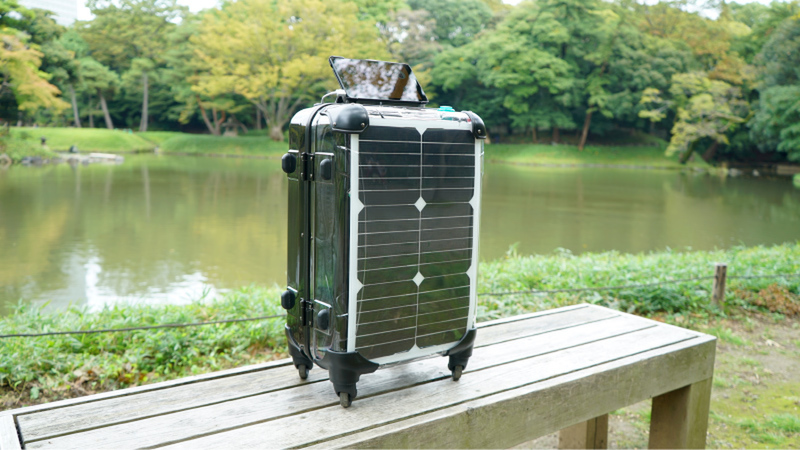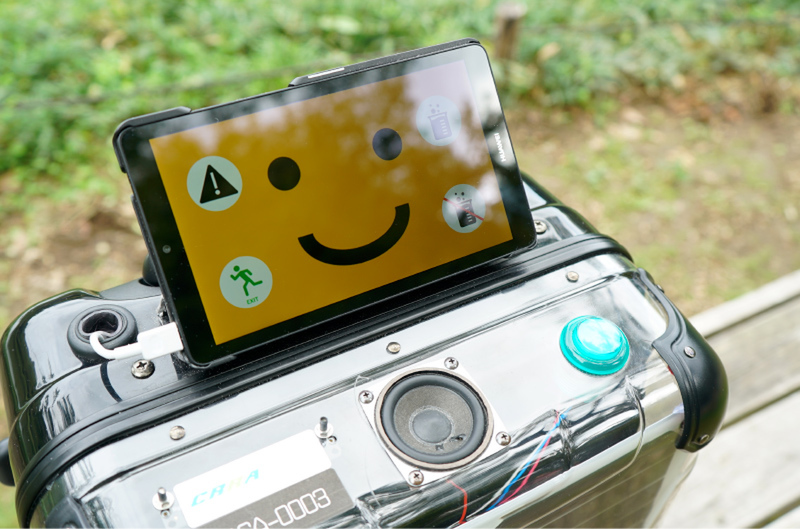Interviews

How One Young Scientist Developed a Semi-Portable CO2 Collection Device
Kazumi Muraki
Teen scientist Kazumi Muraki is working to create just about “anything” from carbon dioxide in the air.
This story has been written by Satoshi Endo and translated by Hiroko Sato. The editorial team for the Innovator's Interview series includes Editor Motoki Kobashigawa, Overseas Assignment Edit
Subscribe to InnoUvators YouTube Channel
Remember Kazumi Muraki, a teenage scientist who built “CARS-α,” a portable, suitcase-shaped carbon dioxide removal system? He was just 17 when his invention made him a finalist in INNOvation, a competitive award program organized by Japan’s Ministry of Internal Affairs and Communications to recognize and support the most disruptive technological talents the country has to offer. Currently a freshman at The University of Tokyo, Muraki is now tackling the next phase of his carbon dioxide-themed ambition: Turning CO2, the gas vilified for its role in climate change, into human’s biggest ally.

CARS-α is contained inside a wheeled travel suitcase. Muraki says he wanted to make the device as user-friendly as a humidifier.
His new machine under development is called “Tolussy,” which plays on the Japanese verb, “toru,” or “take.” It is designed to extract carbon dioxide from an aqueous solution that absorbs the gas. With the media abuzz with reports about the “net zero emissions by 2050” goal to which 17 nations and 34 major corporations are committed, we were curious as to how Muraki sees his latest project fit into the big picture. So, we recently sat down with him to learn more about his project.

Muraki’s interest in carbon dioxide research began when he worked on a project titled, “How to live on Mars,” in a middle school science class.
Tolussy is meant to take advantage of how carbon dioxide reacts with various chemicals for the benefit of people. Among the things Muraki is interested in accomplishing with his machine is harvesting methane from carbon dioxide.
“If there was an easy way to harvest methane from carbon dioxide, we could create virtually anything we need in this world. I mean anything, except for metals,” Muraki said. “From the clothes I’m wearing right now to PET bottles, any petroleum-based product could potentially be created from CO2 or the air.”
Muraki already had an eye toward recycling carbon dioxide for the benefit of society when he invented CARS-α. To make his vision a reality, Muraki reached out to a Hiroshima University researcher with expertise in methane generation to seek his advice. The research Muraki and his team conducted at the university is now bearing fruit.
“There is a chemical process called Sabatier reaction, which is used to generate methane directly from carbon dioxide. Though it was discovered in 1913 by Paul Sabatier, a French chemist who received a Nobel Prize for it, it has never been put to practical use because of the complexity of the process requiring rare metals, among other things, as catalysts,” Muraki said.
This is where Muraki’s ingenuity came through. Just when he was wrapping up his research at Hiroshima University, he looked at aluminum foil in the lab’s kitchen, and the idea hit him: What if he put CO2, water, and pieces of aluminum foil in a container and shook it vigorously, using a machine?
“It worked. We got methane,” Muraki said. “Everybody from our lab was jumping up and down in joy.”
Muraki believes this was the world’s first experiment of its kind, and the team is now working with an expert researcher to verify the results. If this method proves effective, Muraki could join the ranks of scientists who made great discoveries accidentally.
Of course, happy accidents are only a catalyst for success.
“I thought if you shock water, molecules become separated and that may make hydrogen more reactive. If that hydrogen bonds with carbon dioxide by taking oxygen from it, then it would create methane. This was the idea that hit me when I saw the aluminum foil,” Muraki said.
Whether you call it an innate hunch or a product of his passion, he seems to possess that special something that turns scientists into geniuses.

Muraki has conducted his research as a member of Carbon Recovering Research Agency (CRRA). This year, two additional students from the University of Tokyo joined the organization.
During the interview, we were surprised to learn that he had already shown an interest in science when he was just 2 years old. In third grade, he began making a monthly trip to Tokyo from his home in Yamanashi prefecture to attend a science school. Muraki said he enjoyed taking part in science experiments in that school, including a dissection of a pig’s eyeball, through which he learned the structures of humans’ and pigs’ eyeballs are nearly identical. In fourth grade, he transferred to Yamanashi Gakuin Elementary School, which had talented teachers and facilities, including classrooms that “looked like science museums.”
During his high school years, Muraki developed CARS-α, a portable carbon dioxide removal system on wheels, in hopes of “making carbon dioxide-absorbing systems as common a home appliance as a humidifier.”
“When you reduce the carbon dioxide in the room to the level of that in the clean outdoor air, you can focus on your tasks better. Some research papers show your ability to focus quadruples, though how much it increases depends on what your task is,” Muraki said.
The phrase, “carbon dioxide removal systems,” evokes an image of a massive plant. (We imagine the efforts to achieve net zero emissions by 2050 in some countries could also involve the use of such large-scale CO2 removal systems.) In contrast to those industrial machines, Muraki’s CARS-α is not only accessible to everyone but also super fun to use; CARS-α comes with an LCD monitor on which a human face appears and provides voice instructions.
We must say this “talking” feature is very Japanese because the Japanese have always believed, since ancient times, that all “things” have life. The Japanese are also known for their expertise in designing things that people use in everyday life -- such as home appliances and gaming devices -- for great user experiences.
Adults tend to have preconceived ideas of how certain technological systems should look and work. But once disruptive technologies or innovative scientific discoveries are made, you realize how little you knew about this world. We make discoveries one by one, like peeling an onion, and that’s how human history has been built thus far.
The INNO-vation program takes its name from the Japanese word, “inno” (異能), which means extraordinarily unique talent. People with this ability can think outside the bounds of so-called 'common sense'. They are also capable of discovering scientific truth to back up their imaginations. Muraki seems to possess all of these qualities, which explains why he was named to Forbes Japan’s list of “30 UNDER 30 JAPAN” in 2019.
Muraki told us that he began researching carbon dioxide because he wanted to find a way to make Mars a second home for humankind. So, his initial goal wasn’t exactly protecting Earth. But the more he realized how difficult it is to achieve his initial goal, the more priceless Earth seemed to him.
We do not know how far Muraki’s talent will take him. But we will surely be watching his “inno” talent grow and bloom.

“As you may remember, Americans were very excited about going to the Moon during the 1960s. I want to be a Japanese to do something that inspires people like that in order to help curb global warming.”

